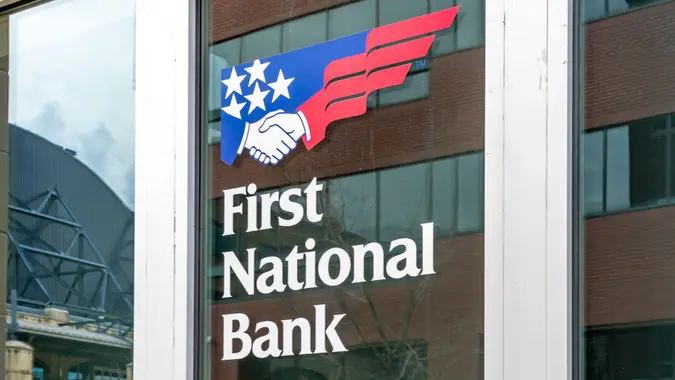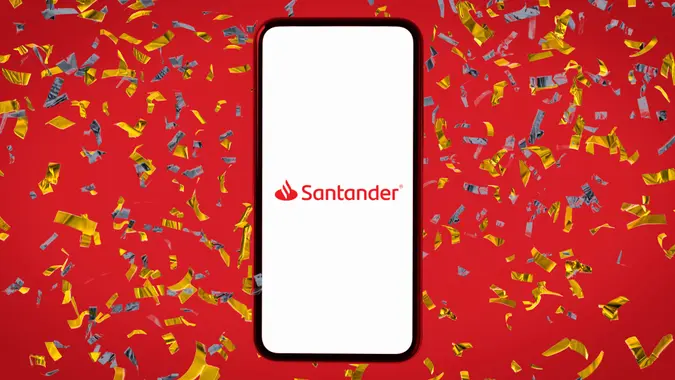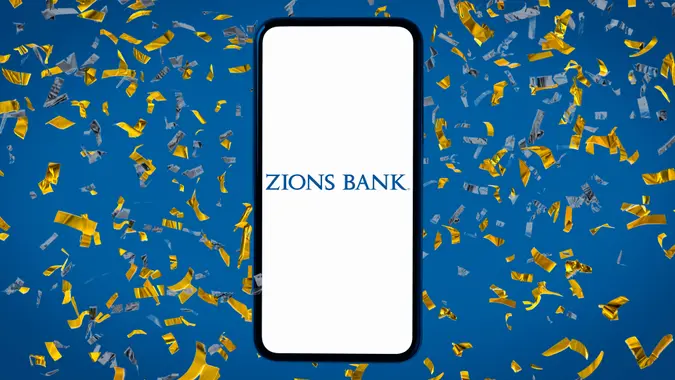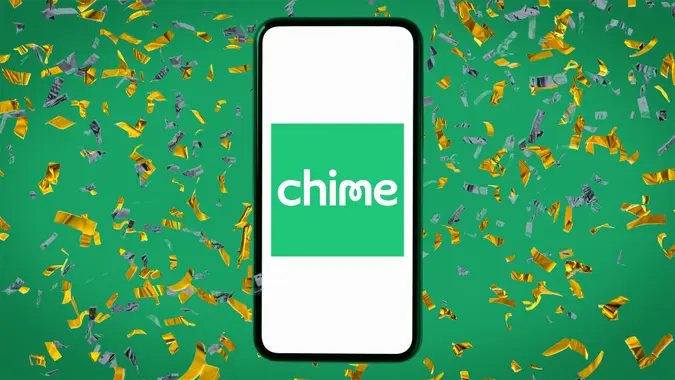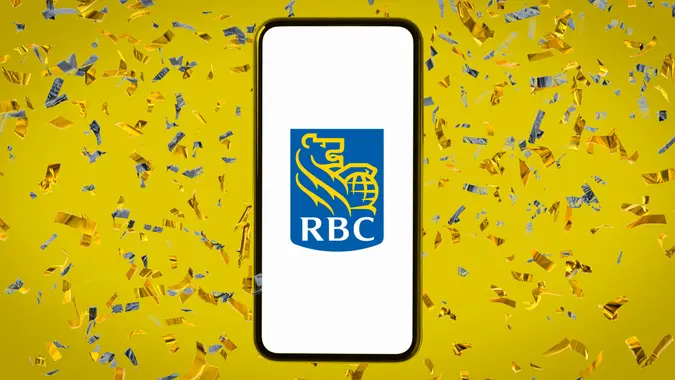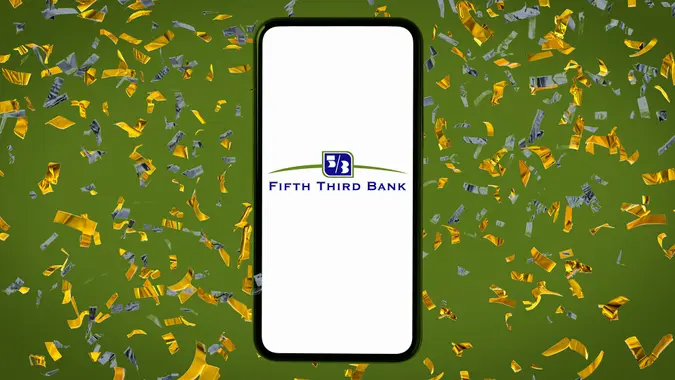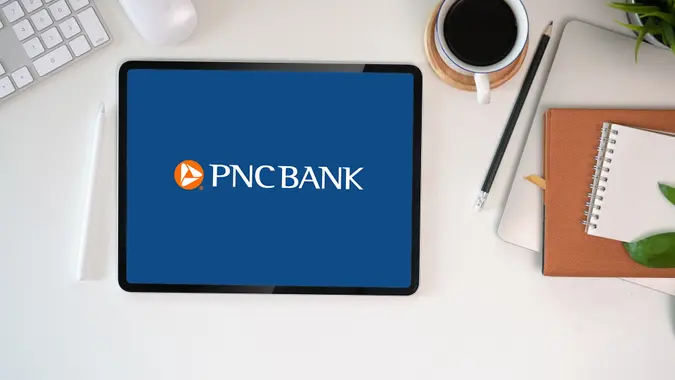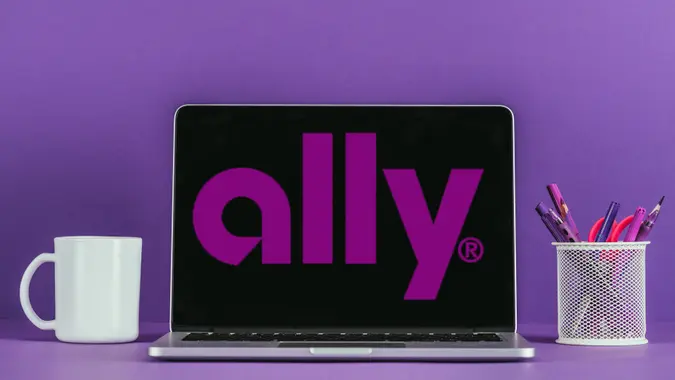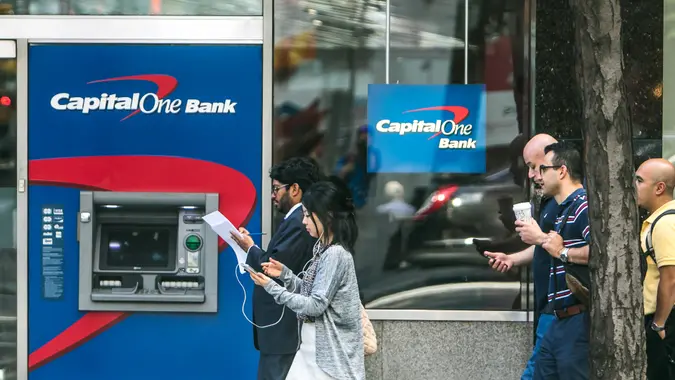Here’s Your America First Routing Number

Commitment to Our Readers
GOBankingRates' editorial team is committed to bringing you unbiased reviews and information. We use data-driven methodologies to evaluate financial products and services - our reviews and ratings are not influenced by advertisers. You can read more about our editorial guidelines and our products and services review methodology.

20 Years
Helping You Live Richer

Reviewed
by Experts

Trusted by
Millions of Readers
If you found yourself here, that means you’re in need of the America First Credit Union routing number. You’ll include this routing number to set up direct deposit or ACH transfers to your America First account.
What Is the America First Routing Number?
The America First Credit Union routing number is 324377516, and is the same for every state.
Where Can You Find the AFCU Routing Number?
Your check is always a great place to look for your AFCU routing number; it’s the nine-digit cluster of numbers located in the lower left corner of your check. Additionally, you can call the bank at 800-999-3961 or visit its website to confirm that you have the correct routing number.
Be mindful not to confuse your account number, which the bank assigns to you personally to provide a destination for transfers and wires, with your routing number.
How Do You Find Your Bank’s Routing Number Without a Check?
It’s easy to find your bank’s routing number even if you don’t have a check handy. One way is to log in to your online banking account and find your bank’s personal information there.
You can also do a quick online search by entering your bank’s name followed by the words “routing number.” Just make sure that the information you find is from a trusted source, such as the American Banker’s Association.
Lastly, your monthly statement will have your bank’s routing number on it. Click through to learn how to understand your bank statement.
Routing Number: Key Facts
The routing number can be found under different names, such as ABA or routing transit numbers. This number is a nine-digit code that every bank or credit union receives from the U.S. Federal Reserve.
Routing numbers are usually used for wire transfers from one institution to another. Sort of like a Social Security number, no two banks or credit unions have the same routing number, although some larger institutions have multiple routing numbers organized geographically.
While routing numbers and SWIFT numbers sound similar, there is actually a key difference between the two. SWIFT numbers are used to receive an overseas or international money transfer. America First’s website lists a few uses for a routing number, such as using one for “direct deposit, wire transfers, tax purposes, paying utilities,” and more.
When Do You Need a Routing Number?
You’ll need your bank’s routing number for certain financial transactions dealing with your bank account. For example, if you want your job to directly deposit your paycheck to your bank account, you’d give them this routing number so the money goes to the right place.
You’ll also need the AFCU routing number when you pay bills online or set up payments to happen automatically via ACH transfer. If you’re getting a tax refund directly deposited, you will need your routing number handy.
Finally, you need to know your bank’s routing number for sending or receiving money through wire transfers. Without it, you can’t move the money.
How Does a Routing Number Work?
Routing numbers were first used by the American Bankers Association — hence why they’re sometimes called ABA numbers — in 1911. The digits comprising the routing number aren’t randomized; each digit indicates a particular attribute about the bank:
- The first four digits are called the Federal Reserve Processing Symbol. The first two digits deal with the head branch of the Federal Reserve district that serves the bank. The third digit indicates the Federal Reserve processing center assigned to the bank. The fourth digit specifically indicates the bank’s location.
- The next four digits are actually randomized, assigned to banks per the ABA.
- The final digit is the “check digit” that confirms the bank’s validity.
While these numbers don’t totally prevent bank fraud, they do allow financial institutions to “talk” to each other so each knows where funds are coming from. Essentially, routing numbers are used to identify banks during financial transactions to ensure funds are properly received and distributed by the correct parties.
Final Take
While bank routing numbers are somewhat like a public address for your financial institution, be cautious when sharing them. These numbers allow others to deposit funds into your account but cannot be used for withdrawals. Nevertheless, it’s still important to only provide your routing number to trusted, legitimate parties.
Always verify any request for this information to prevent the risk of fraud or unauthorized transactions. Exercising diligence and caution can protect you from potential identity theft and keep your banking information secure.
Arielle Moscati and Aja McClanahan contributed to the reporting on this article.
Editorial Note: This content is not provided by any entity covered in this article. Any opinions, analyses, reviews, ratings or recommendations expressed in this article are those of the author alone and have not been reviewed, approved or otherwise endorsed by any entity named in this article.
 Written by
Written by  Edited by
Edited by 



